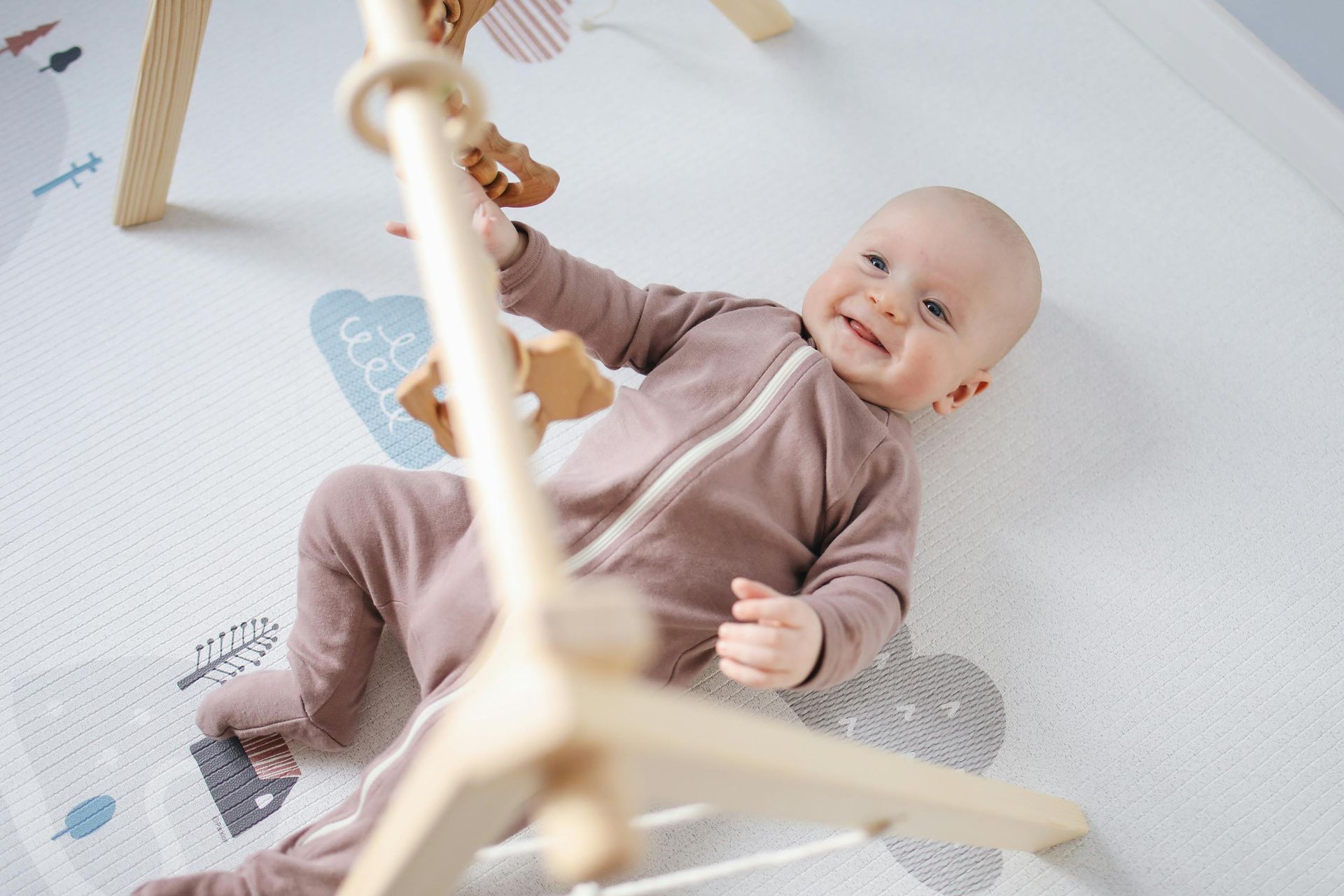YOUNG INFANT (6 MONTHS)
- Small objects, baby powder and cleaners should be kept away from the baby so that he or she may not ingest these materials.
- Small toys should be checked for vulnerability to breakage and small loose parts that can be pulled off and swallowed.
- We discourage the purchase of an infant walker because of the risk of injury. The use of an infant walker will not help your child to walk alone at an earlier age.
- It is important to check your home for possible physical hazards such as stairs, elevated fireplace hearths and sharp table edges. Elevated fireplace hearths are particularly dangerous for young children. The child should be protected from these hazards by gates and padding as appropriate. We discourage the use of expandable wooden slat type gates because of the danger of strangulation.
- We recommend that you take a crawling tour of your home looking for possible hazards that your infant can get into. Electrical outlets should have plugs placed; cabinet doors should have locks. Poisons, cleaning products, furniture polish and other toxic material should be placed well out of the reach of the infant and locked up. Other possible hazards should be identified and secured.
- An infant should never be left alone in the bathtub.
- We suggest using a playpen as an “island of safety.”
- Protect your infant from sunburns. Skin cancers are more likely to occur in people who have sunburns at an early age. Sunscreens are safe to use after the age of six months. Coppertone Waterbabies 50 SPF is a good choice and a top choice in Consumer Reports ratings.
- Continue placing your child in a child car seat. By the time a child is two years of age, the car seat may be faced forward, but not until then. A child should remain in a car seat until the child is approximately 40 pounds or about four years of age. Make sure that the child car safety seat is the proper size for your child’s weight. Continue to avoid placing the car safety seat in an automobile seat which is equipped with an air bag. Continue to be vigilant in not leaving your child alone in a hot car. Our car seat recommendations can be found here.
- Begin to read to your child from books at this age to encourage language acquisition. Reading and simple phonics can promote reading skills even in children of this age. Refer to our recommended storybook reading list at the end of this handbook. In addition, talk to your child in full adult sentences. Don’t use “baby talk.” Explain things. Teach her words. Narrate life for your child. Receptive language skills in young babies far outpace expressive language skills at this age. Said differently, a child understands much more than they can say. So, talk to your baby to help build their language acquisition.
- Let your child explore their surroundings. Show your child interesting sights, such as zoo animals. Let your child explore various textures with their hands. Let them sit in the grass, touch ice and pet a puppy.
- Continue to limit screen time.
- If your child’s eyes are crossed (with one eye turning inward or outward), please make an appointment to have this checked if your child is four to six months or older. This condition is called esotropia for eyes that are crossed inwardly and exotropia for eyes that diverge outwardly. Photos are a good way to look at the position of your child’s eyes over time. Correction of esotropia and exotropia prevent amblyopia, a type of permanent blindness due to these conditions being left untreated. So, attention to this matter is important.
- Young children need immunizations to prevent serious diseases. Please see our recommended immunization and check-up schedule.


